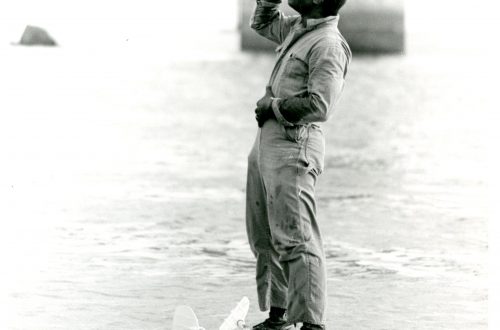General Map of the Canal Zone
This map of the Canal Zone was created in November of 1905 by the Isthmian Canal Commission. To view it at full size, with more detail, simply click the image to view it at the UFDC site.

What strikes you about this early map?
Can you tell us anything about the yellow and red markings?
How does this map compare to the Canal Zone today or even 20 years ago?
Share your thoughts about this fascinating and historical piece of the collection in the comments section!



0 Comments
Robert Dillon
This Official ICC map shows the Canal Zone as it would have existed in November 1905 when John Stevens started his work there. John Wallace had abruptly left the job in June of that year.
The red line across the middle of the map is the centerline of the planned Canal, still sea level, with distances demarcated in kilometers.
There are no locks or dams in this plan. The existing (completed) French excavation is shown. It looks like they got all the way to Bohio on the Atlantic side. This would explain the early plans for a lock and dam at Bohio (as seen on the old maps after the lock and lift plan came onboard).
The vehicle roads that existed are shown, all on the Pacific side, only extending as far north as Gorgona (across the canal from current day Gamboa).
The line of the Panama Railroad can be seen as it existed prior to the massive work, done by John Stevens, which gave us all those photos of railroad track everywhere, building the Canal and the Zone.
There is a railroad spur/extension at Tavernilla, along the planned canal centerline, i’m guessing for excavation there that was started by the French. Also, the railroad line splits in two, from Culebra to Pedro Miguel, and I’m guessing the east line is the canal line from the French plan.
The 5-mile borderline of the Canal Zone, as specified in the treaty, is shown with respect to a different canal than was eventually built.
Panama and Colon were to be excluded from the Canal Zone which would explain the red coloration of their areas.
The strange fine red line polygonal shapes drawn throughout the map, and the seeming random red spots, represent the real estate purchased from the French which included properly purchased and owned by the French canal company, and the Panama Railroad Company. Those shapes come from here…
http://ufdc.ufl.edu/AA00019315/00001/484x?search=map&vo=
This map should be restored and preserved as it is the definitive snapshot of the Canal Zone, before the U.S. really began building the canal. It also shows one how much property that the U.S. did indeed own, as opposed to the myth of usurpation of Colombian/Panamanian property.
Robert Dillon
I found a very cool and detailed ICC map of the CZ from 1911 here…
http://www.wdl.org/en/item/15236/
Property Map of the Canal Zone Showing Property Belonging to the United States of America, Panama Railroad Company, and Lands Claimed by Private Persons
Robert Dillon
From 1857…
Map of the Isthmus of Panama representing the line of the Panama Rail Road as constructed under the direction of George M. Totten, chief engineer &c.
https://www.loc.gov/resource/g4872p.pcc00004/
I love these old maps. Wish I had seem them back in the 70’s while in the Zone.
Robert Dillon
From 1895…
Maps of proposed Panama Canal between Gorgona and Panama City.
https://www.loc.gov/item/93680805/
French Canal stuff. Hill heights in meters I assume. This map includes Locks. Wish I could find the rest of the maps, from Gorgona to Limon Bay.